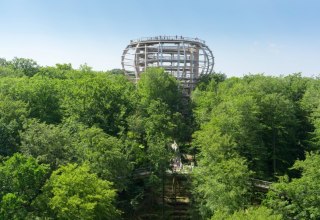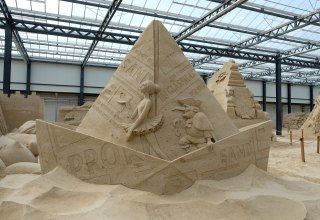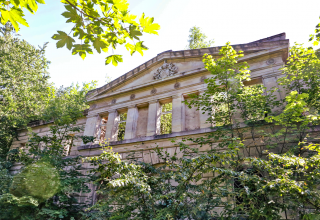North of the village of Neddesitz on the island of Rügen is the sacrificial stone Quoltitz, which was first described in 1797 and also already recorded in a drawing by none other than the romantic painter Caspar David Friedrich.
This stone is one of the largest erratic boulders of Rügen, on the surface of which several circular depressions (bowls), a clear groove from blasting tests and traces of the removal of round stones, which were probably processed into round mills, can be discovered. The granite stone, weighing 73 tons, has a circumference of 13.5 meters at its base. Besides Caspar David Friedrich, who made some drawings of the stone around 1806, other important painters of the Romantic period also depicted this particular stone.
What the bowls on the boulder were used for has not been clarified to this day. Findings of circular flints next to another cup stone near Lubkow may give clues to the origin of the bowls. The scarred flint balls fit exactly into the bowls of the stone, so they may have been formed by rotational turns of the flint ball. Near the stone a flint sickle fragment, a leaf tip, amber beads as well as human bone remains were found, which allow numerous speculations about the "sacrificial stone".
Author: Dr. Katrin Staude / Archaeo Tour Rügen, archaeo-tour-ruegen.de

















